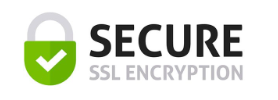Founded in Denmark. We respect your privacy.
Join a worldwide community of language learners
Cultural Insight in Language Learning: Understanding Traditions, Values, and Etiquette
Cultural Insight in Language Learning has become a critical aspect of gaining proficiency in a new language. The nuances of culture — traditions, values, and etiquette — are tightly woven into the fabric of language. Without an understanding of these elements, language learners can easily misinterpret or fail to fully grasp the significance of certain phrases, gestures, and social cues, leading to communication breakdowns. Cultural insight opens a window not only to speak a language but to truly understand and participate in the society where the language is spoken.
The Role of Culture in Language Learning
When you embark on the journey to learn a new language, you are also inadvertently signing up to learn about a new culture. Language is merely the vehicle through which the individual gets to explore the intricate patterns of thought, behavior, and communication that define a given society. Learning about holidays, customs, and everyday life allows us to see the language as more than a set of grammatical rules or vocabulary lists; it becomes a means to connect with people on a deeper level.
Understanding how culture shapes language can also be enlightening for language learners. For instance, in many languages, there are formal and informal ways of addressing people. The criteria for when to use each form can differ widely from culture to culture. A learner who understands these social parameters is better able to navigate conversations respectfully and effectively. Knowing when to switch from 'tu' to 'usted' in Spanish, or from 'du' to 'Sie' in German, requires more than language proficiency — it requires cultural insight.
Integrating Cultural Insight in Language Practice
To truly understand and use another language competently, it's important to also practice and engage with its cultural context. Digital platforms like Talkio can be especially helpful here. Although Talkio simulates conversation with native speakers, allowing language learners to practice their oral language skills, the cultural context is vital. These platforms can help learners pick up on conversational patterns and etiquettes which are part of the cultural learning curve.
Beyond virtual platforms, real-life immersion is valuable. Participating in cultural events, tradition-based festivities, or even watching films and reading books in the target language are ways to absorb the culture outside the confines of explicit language study. This informal learning helps solidify understanding and aids in grasping the fine cultural nuances that influence language use. For example, a Japanese language learner attending a traditional tea ceremony will gain insight into the formal language and respectful customs that are a cornerstone of Japanese etiquette.
Cultural Insight in Language Learning and Communication
The impact of cultural insight in language learning is perhaps most evident in the realm of communication. Knowing a language well enough to order food or ask for directions is one thing, but engaging in meaningful conversations with natives, understanding humor, and expressing emotions appropriately is quite another. Here, cultural insight becomes an essential tool for bridging the gap between a foreigner and a native speaker.
In many cultures, there are topics that are considered taboo or sensitive, and these can vary widely. What might be deemed as a harmless topic of conversation in one culture could be offensive in another. A language learner aware of these cultural taboos is less likely to commit faux pas and more likely to build rapport with native speakers. Additionally, understanding non-verbal communication, such as gestures and body language, can greatly aid in making interpersonal connections.
In conclusion, cultural insight in language learning is not a luxury; it is a necessity for any language learner aspiring to competence in all dimensions of communication. It is through this understanding that language becomes alive and truly functional in a real-world context. Whether through digital platforms like Talkio or real-life experiences, incorporating cultural knowledge is crucial for anyone looking to not just speak a new language, but to truly understand and engage with a new culture.


